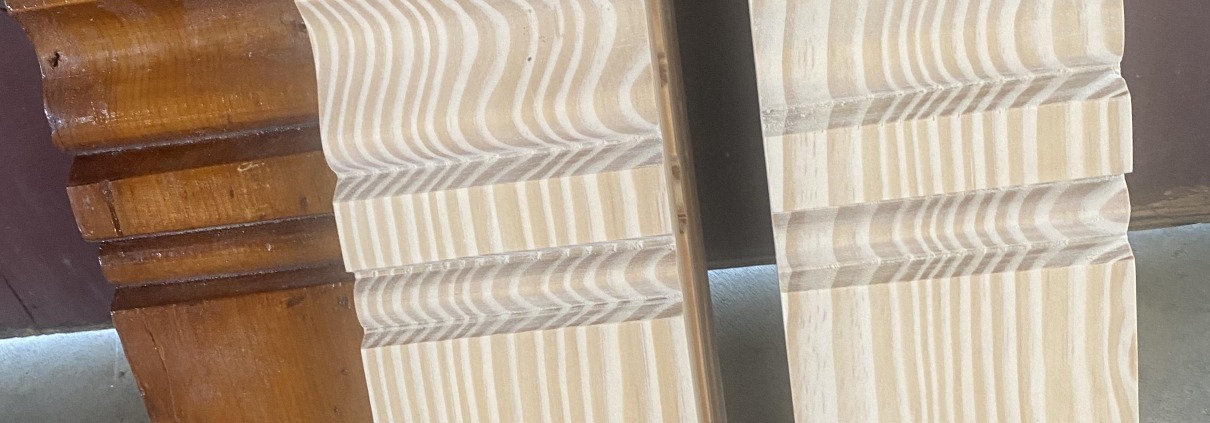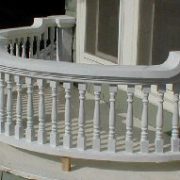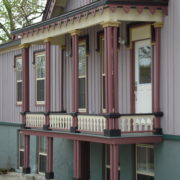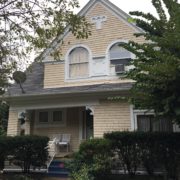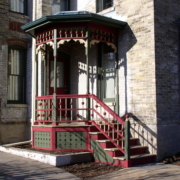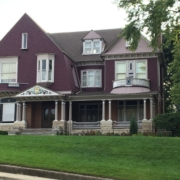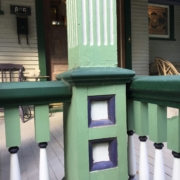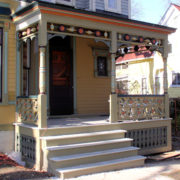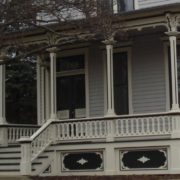Making baseblocks for old house trim
In my old house woodworking business I often get asked to duplicate old house trim baseblocks. I do not think the old timers used a molding machine or shaper to make them as you cannot mold perpendicular to the grain. I tried it once by putting the wood on a sled to hold short pieces to go thru the molder. The results were disastrous. I believe they used a bandsaw to cut them. I have seen some evidence of that on old ones. The only problem with a bandsaw is that it leaves a rough surface which takes a lot of sanding. I need to look into a fine-toothed bandsaw blade. The fine-toothed blade on my scroll saw leaves a smooth surface. I make my base blocks on a bandsaw and have spent hours sanding. Machines can be used for parts of them.
The first thing to do is to trace the pattern on the edge of the wood.
I screw the blocks of wood to a jig/handle that keeps the wood perpendicular to the table of the bandsaw. I then slowly cut to the line.
Here are the finished products after a lot of sanding.
The original base blocks were southern yellow pine. After a long search, I found a source for southern yellow pine. Our treated lumber is made from it but you cannot use it for interior wood that is to be varnished. Notice in the new books that the growth rings are very far apart making it kind of wild. New growth wood today is grown on a plantation where they water and fertilize it making the growth rings about 3/8 of an inch apart. In old growth trees, the growth rings would be 1/16 or less apart.
Here are the patterns I used to make base blocks over the past 30 years.
Here are some base blocks I have collected over the years from houses that were demolished.
Here is a base block where the trim carpenter mortised in a space for the baseboard. Wow! You will not find a carpenter doing that today. The baseboard can shrink slightly without creating a gap. I wonder why he did not include the base cap.

